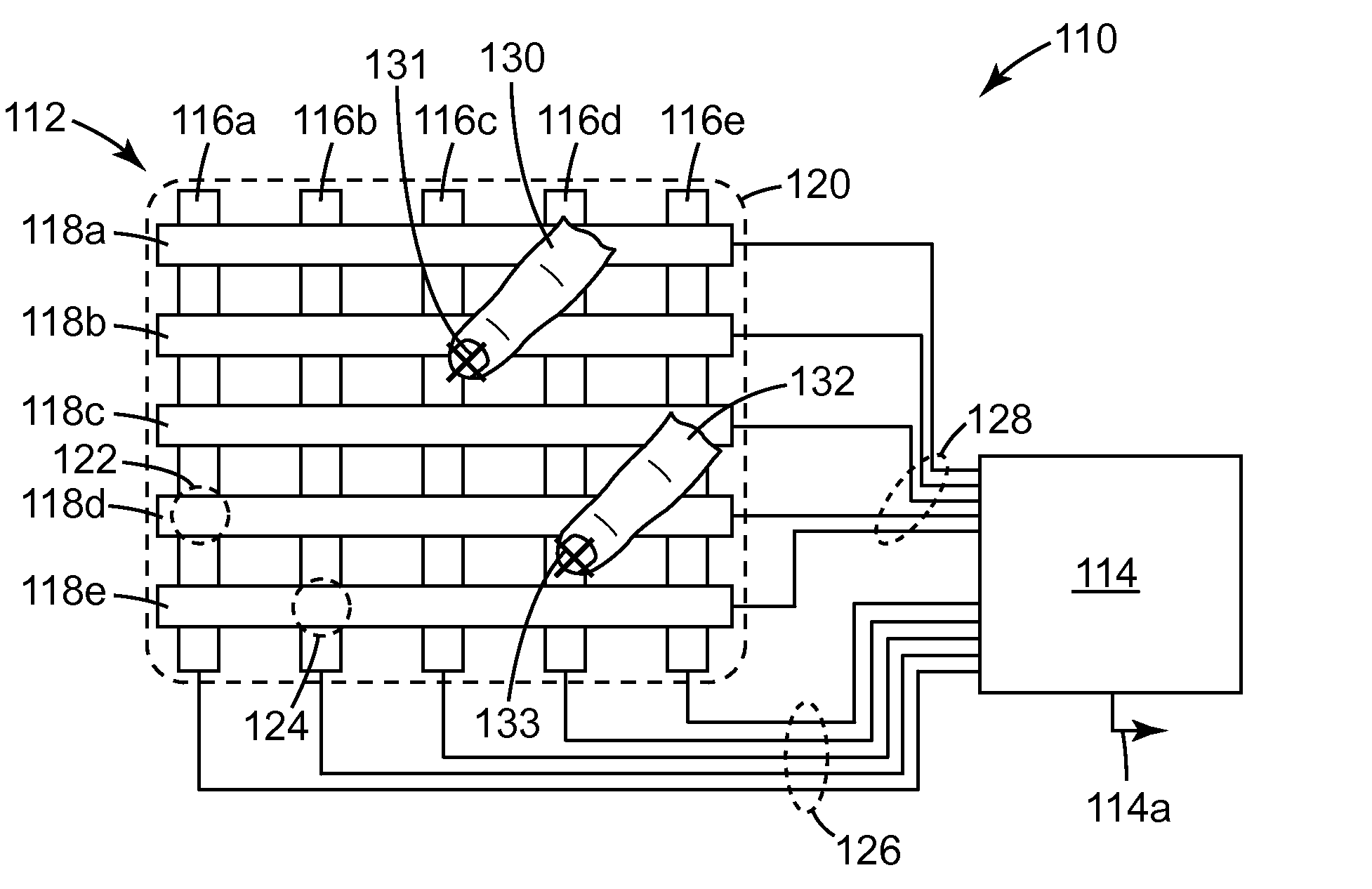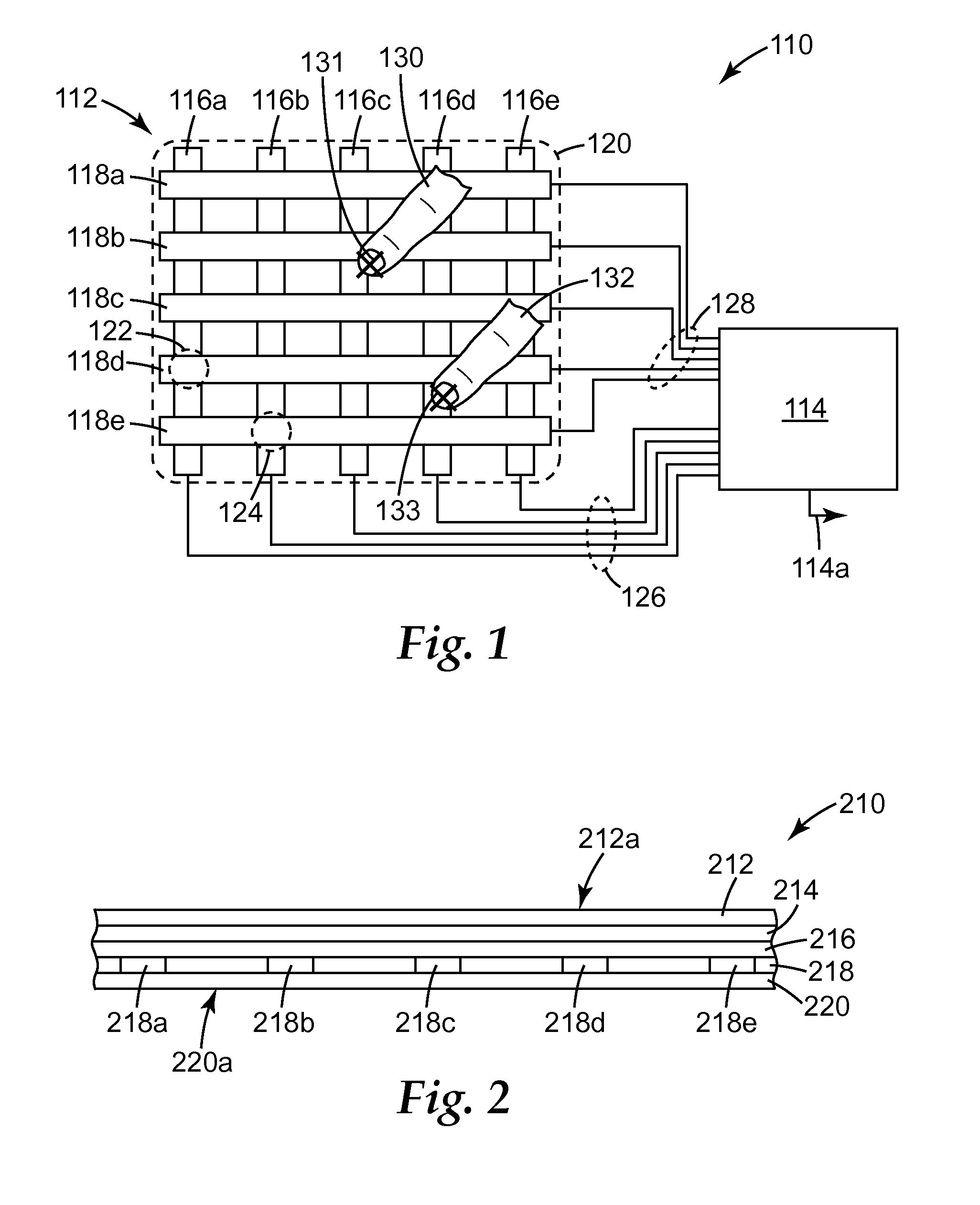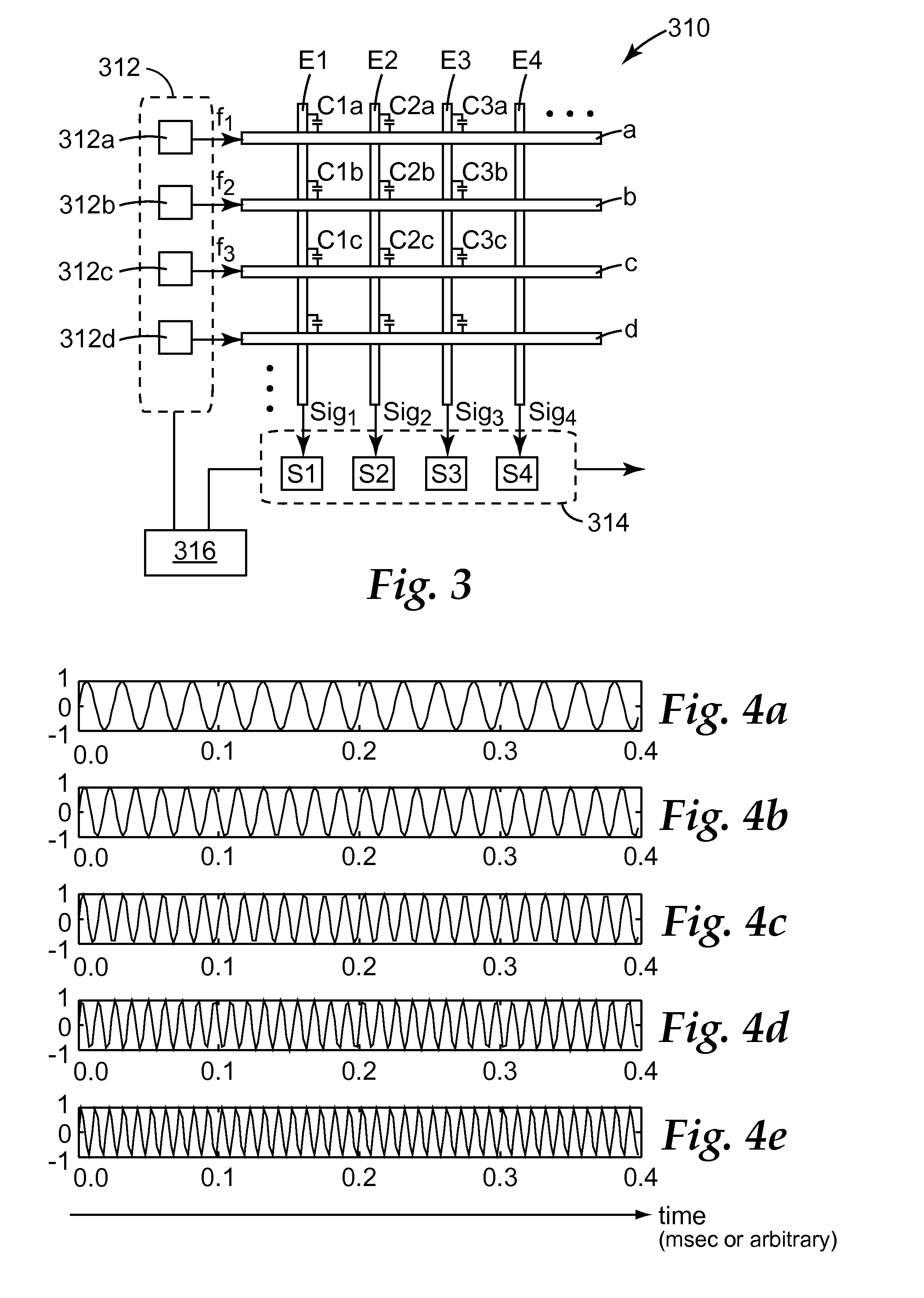Multi-touch touch device with multiple drive frequencies and maximum likelihood estimation
a multi-touch, drive frequency technology, applied in the direction of instruments, transmission systems, computing, etc., to achieve the effect of reducing or eliminating, reducing or eliminating
- Summary
- Abstract
- Description
- Claims
- Application Information
AI Technical Summary
Benefits of technology
Problems solved by technology
Method used
Image
Examples
Embodiment Construction
[0028]In FIG. 1, an exemplary touch device 110 is shown. The device 110 includes a touch panel 112 connected to electronic circuitry, which for simplicity is grouped together into a single schematic box labeled 114 and referred to collectively as a controller.
[0029]The touch panel 112 is shown as having a 5×5 matrix of column electrodes 116a-e and row electrodes 118a-e, but other numbers of electrodes and other matrix sizes can also be used. The panel 112 is typically substantially transparent so that the user is able to view an object, such as the pixilated display of a computer, hand-held device, mobile phone, or other peripheral device, through the panel 112. The boundary 120 represents the viewing area of the panel 112 and also preferably the viewing area of such a display, if used. The electrodes 116a-e, 118a-e are spatially distributed, from a plan view perspective, over the viewing area 120. For ease of illustration the electrodes are shown to be wide and obtrusive, but in pr...
PUM
 Login to View More
Login to View More Abstract
Description
Claims
Application Information
 Login to View More
Login to View More - R&D
- Intellectual Property
- Life Sciences
- Materials
- Tech Scout
- Unparalleled Data Quality
- Higher Quality Content
- 60% Fewer Hallucinations
Browse by: Latest US Patents, China's latest patents, Technical Efficacy Thesaurus, Application Domain, Technology Topic, Popular Technical Reports.
© 2025 PatSnap. All rights reserved.Legal|Privacy policy|Modern Slavery Act Transparency Statement|Sitemap|About US| Contact US: help@patsnap.com



